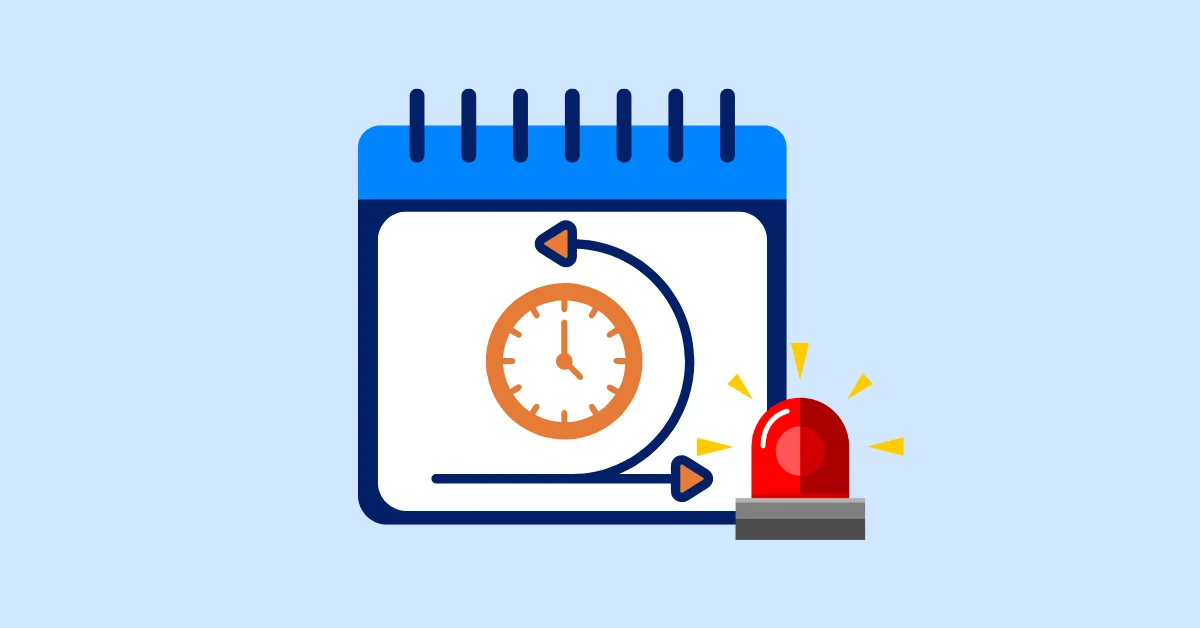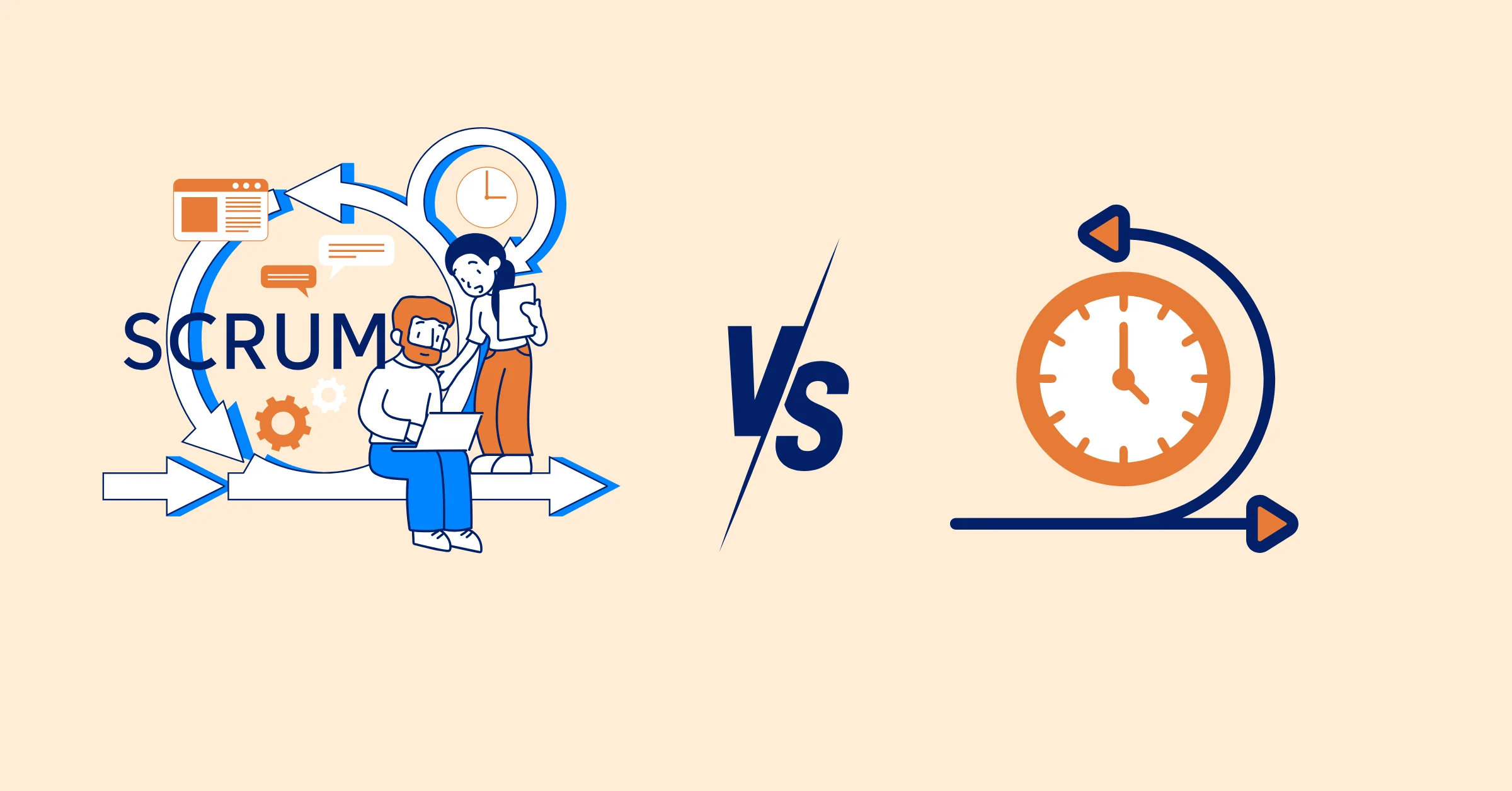Forward Pass Project Management: The Key to On-Time Project Delivery and How to Calculate It
Learn how Forward Pass Project Management ensures timely delivery by calculating earliest start and finish times to optimize your project schedule.
Project delays can throw even the most well-planned projects off course, leading to lost time, increased costs, and damaged reputations. According to the Project Management Institute , nearly 30% of projects fail to meet their deadlines, often due to inadequate scheduling.But what if you could predict your project’s timeline with greater accuracy and stay ahead of potential setbacks? Enter Forward Pass Project Management.
As a key component of the Critical Path Method (CPM), the Forward Pass helps determine the earliest possible start and finish times for each task, ensuring your project stays on track for timely completion. In this article, we’ll dive into the details of Forward Pass Project Management, how it works, and its benefits for delivering projects on time.
What is Forward Pass Project Management?
Forward Pass Project Management is a scheduling technique used in project management to determine the earliest possible start and finish times for each task or activity in a project. It is a key element of the Critical Path Method (CPM) and is primarily used to create a project timeline by calculating the earliest dates that tasks can begin and end, based on their dependencies.
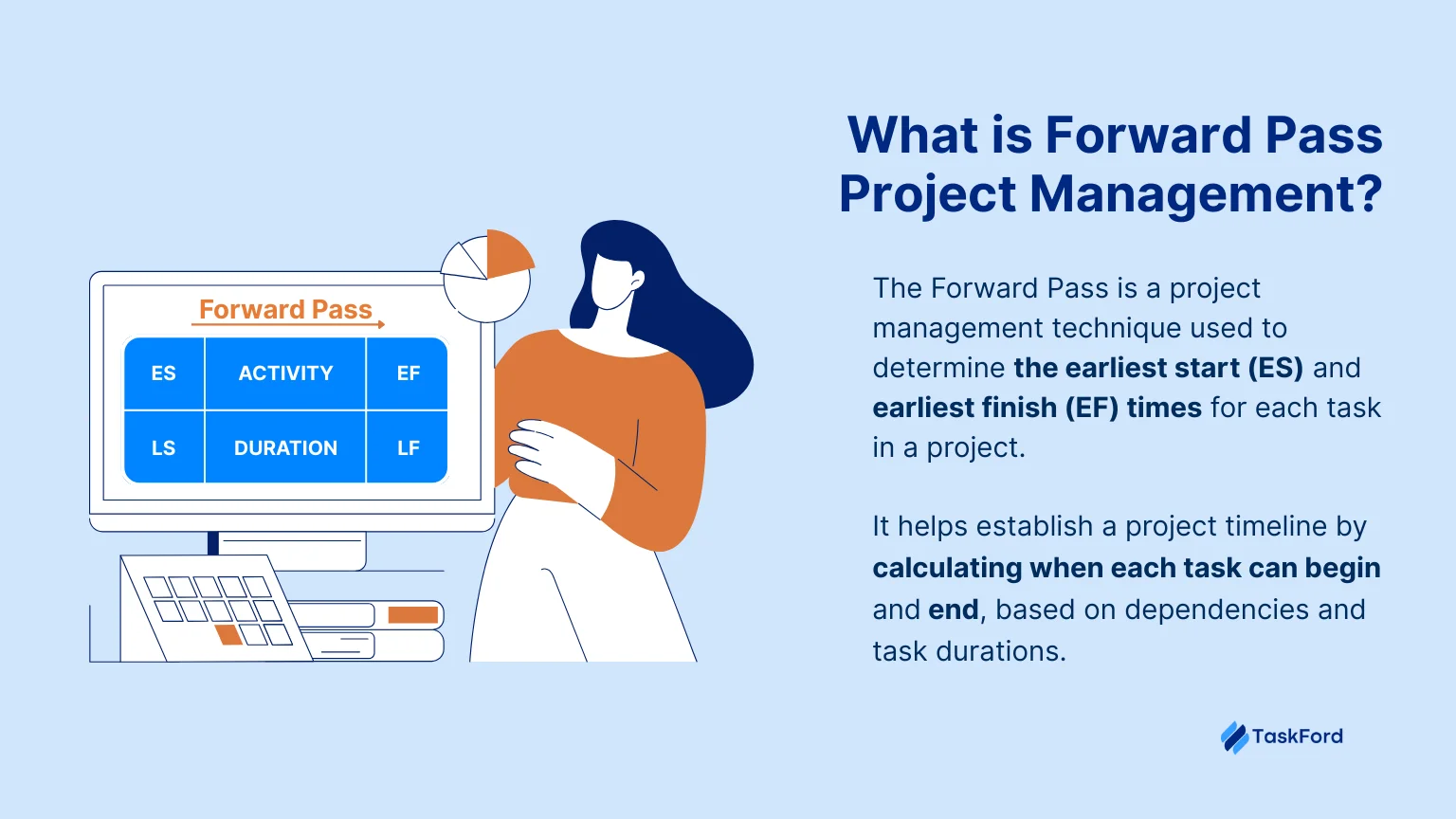
In the forward pass process, project managers begin with the first task in the project, calculate its earliest start time, and then determine when it can be completed. They continue this process for all subsequent tasks, following the flow of project dependencies until all tasks have been accounted for. The goal is to ensure that every task is scheduled optimally, considering the project’s constraints and available resources.
Key Points about Forward Pass:
- Earliest Start (ES): The earliest date a task can begin, based on the completion of preceding tasks.
- Earliest Finish (EF): The earliest date a task can finish, calculated by adding the task’s duration to its earliest start date.
- Dependencies: Relationships between tasks, like finish-to-start (Task B can’t start until Task A finishes).
- Critical Path: The sequence of tasks that determines the overall project duration. The Forward Pass helps identify this path—any delays in these tasks will delay the entire project.
For example: Consider a product launch where tasks like “Design Prototype” (5 days) and “Test Product” (3 days) are dependent on each other. The Forward Pass ensures no task starts before the preceding one finishes, giving a clear timeline to avoid delays.
How is Forward Pass Different from Backward Pass?
The Forward Pass focuses on establishing the earliest possible timeline for a project, while the Backward Pass calculates the latest possible start and finish times, helping identify task flexibility (Float project management). While the Forward Pass helps detect potential delays early, the Backward Pass ensures tasks are completed on time and identifies critical tasks that cannot be delayed.
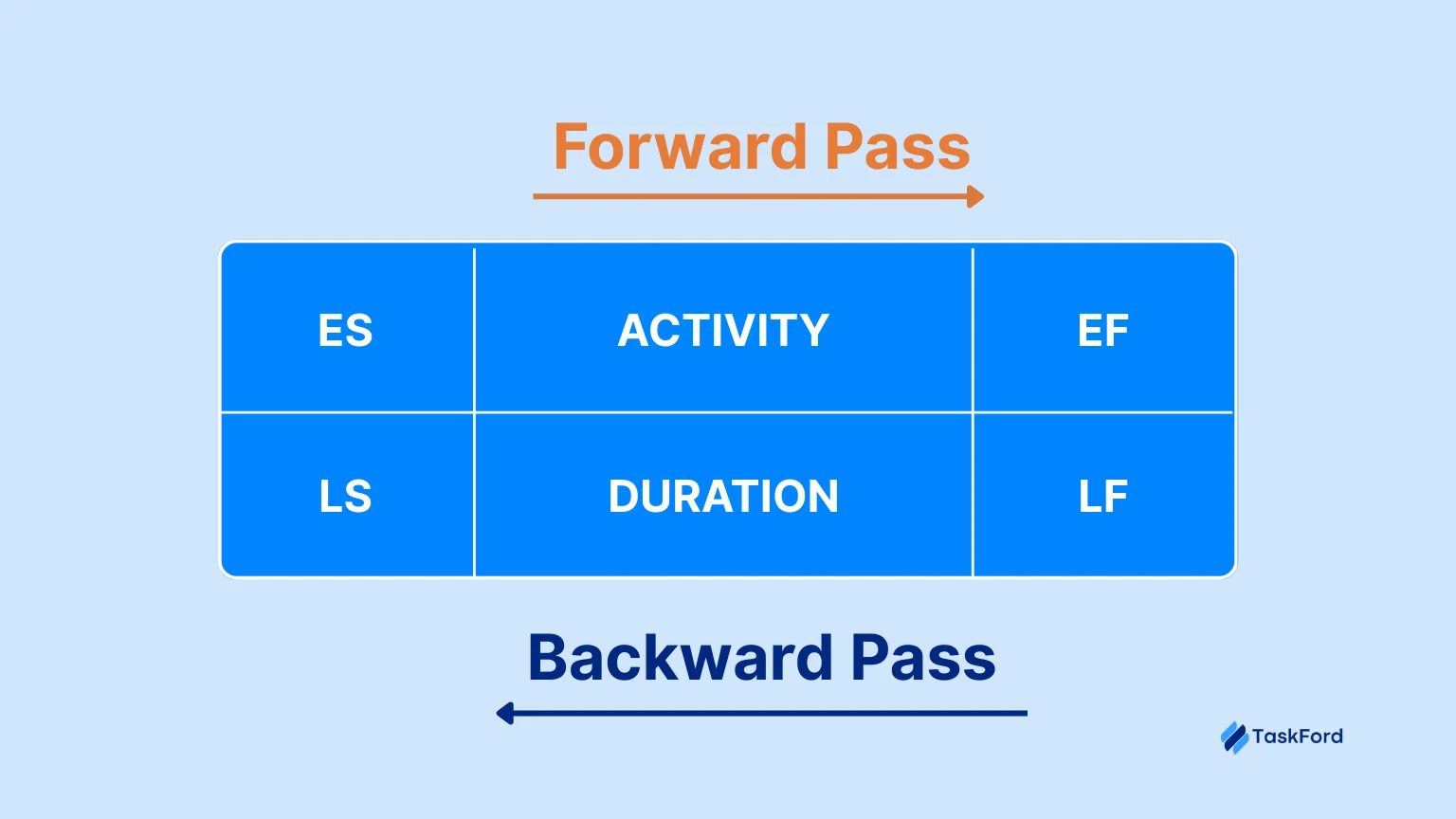
How to Calculate Forward Pass Project Management?
The Forward Pass technique calculates the Earliest Start (ES) and Earliest Finish (EF) for each task, providing a realistic project timeline. Here's a step-by-step guide:
Step 1. Create a Project Network Diagram
First, you need to create a visual representation of the project tasks and their dependencies. This diagram shows how each task relates to others and the sequence in which they need to be completed.
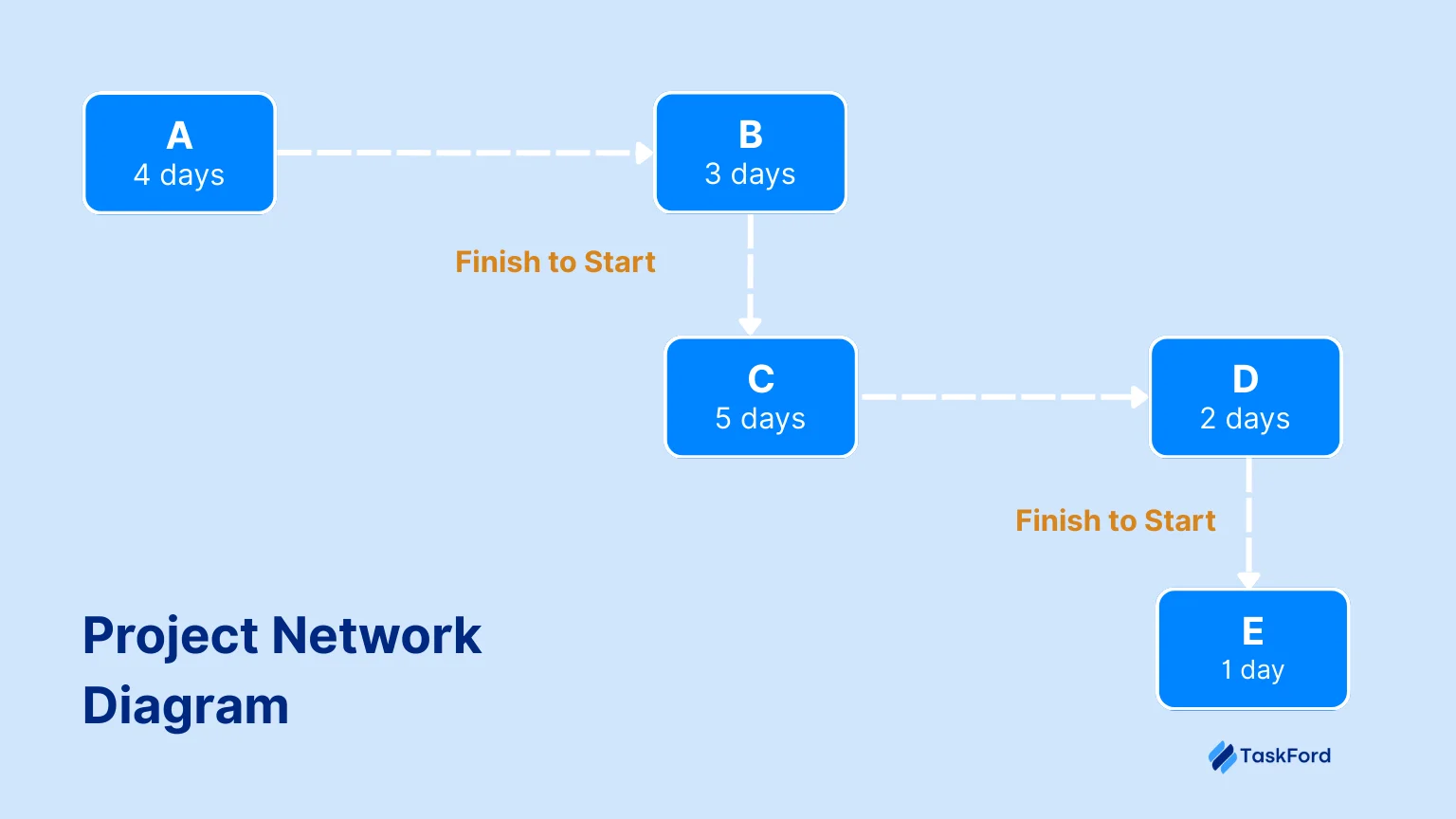
Step 2: Calculate the Earliest Start (ES) for the First Task
- Start with the first task in the project. The earliest start time (ES) for this task is typically zero or the project’s start date, assuming there are no delays or constraints.
- ES = 0 (or the project’s start date).
- For each subsequent task, the earliest start is determined by the earliest finish time of the task that must precede it.
Step 3. Calculate the Earliest Finish (EF) for the First Task
The Earliest Finish (EF) for the first task is calculated by adding its duration to its Earliest Start (ES).
- EF = ES + Task Duration.
- For example, if Task 1 has a duration of 5 days and starts on day 0, its EF will be EF = 0 + 5 = 5.
Step 4. Calculate ES and EF for Subsequent Tasks
For each subsequent task, the Earliest Start (ES) is determined by the Earliest Finish (EF) of the task that must precede it.
- If Task 2 depends on Task 1, then the ES for Task 2 will be the EF of Task 1 (in this case, 5).
- Then, calculate the EF for Task 2 by adding its duration to its ES.
- EF = ES + Task Duration.
- For instance, if Task 2 starts on day 5 and has a duration of 3 days, its EF would be 5 + 3 = 8.
Step 5: Repeat for All Tasks
- Continue calculating ES and EF for all tasks in the project. For tasks with multiple predecessors, the ES is the latest EF of those predecessors.
- For example, if Task 3 depends on both Task 1 and Task 2, its ES will be the later of the two EF values for Task 1 and Task 2.
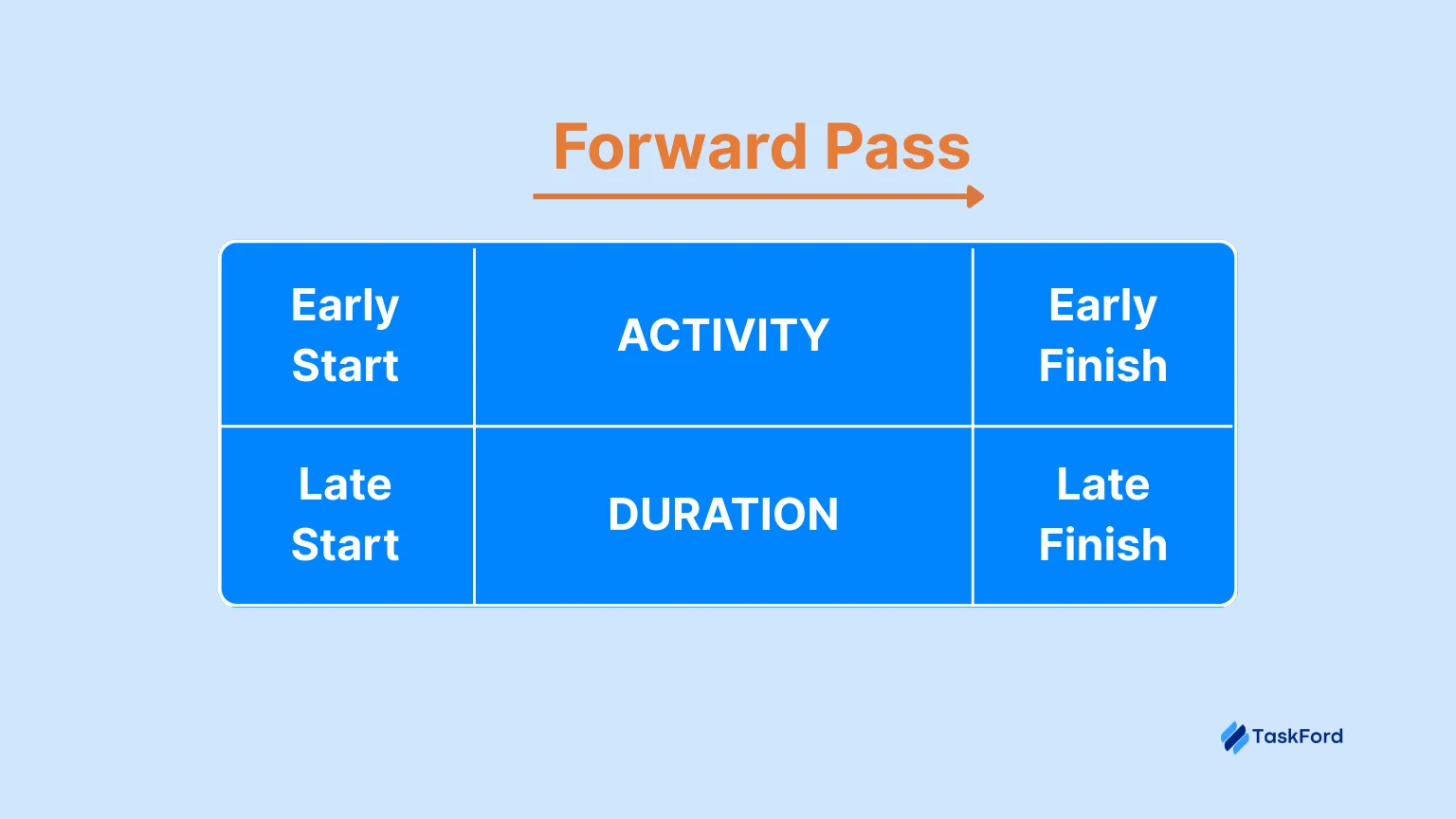
Step 6. Identify the Critical Path
As you calculate the earliest start and earliest finish for each task, the critical path will emerge. The Critical Path Method in Project Management is the sequence of tasks that determines the overall project duration. Any delay in tasks on this path will delay the entire project.
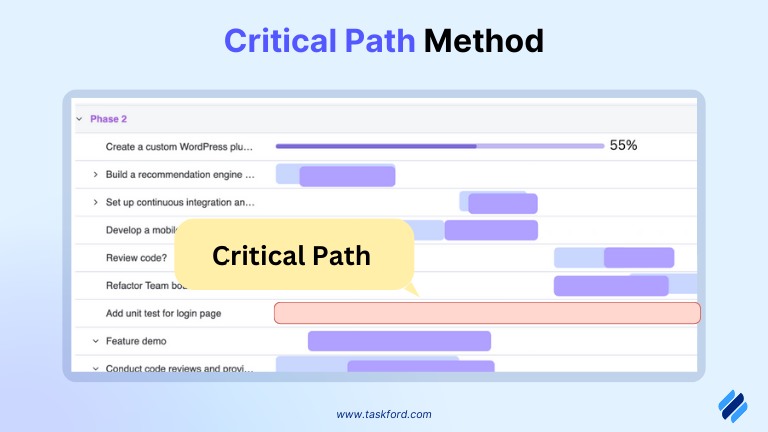
Step 7: Finalize the Project Timeline
After completing the forward pass for all tasks, you’ll have the earliest start and finish times for each task. This allows you to create a detailed and accurate project schedule, allocate resources, and ensure that critical tasks are prioritized to avoid delays.
Example: Website Development Project
Let’s consider a simple project involving three tasks:
- Task A: Design (4 days, no predecessors)
- Task B: Development (5 days, depends on Task A)
- Task C: Testing (3 days, depends on Task B)
Calculations:
Task A: Design
- ES = 1 (since it’s the first task, it starts on day 1)
- EF = ES + Duration - 1 = 1 + 4 - 1 = 4
→ Task A finishes on day 4.
Task B: Development
- ES = EF of Task A + 1 = 4 + 1 = 5 (Task B starts the day after Task A finishes)
- EF = ES + Duration - 1 = 5 + 5 - 1 = 9
→ Task B finishes on day 9.
Task C: Testing
- ES = EF of Task B + 1 = 9 + 1 = 10 (Task C starts the day after Task B finishes)
- EF = ES + Duration - 1 = 10 + 3 - 1 = 12
→ Task C finishes on day 12.
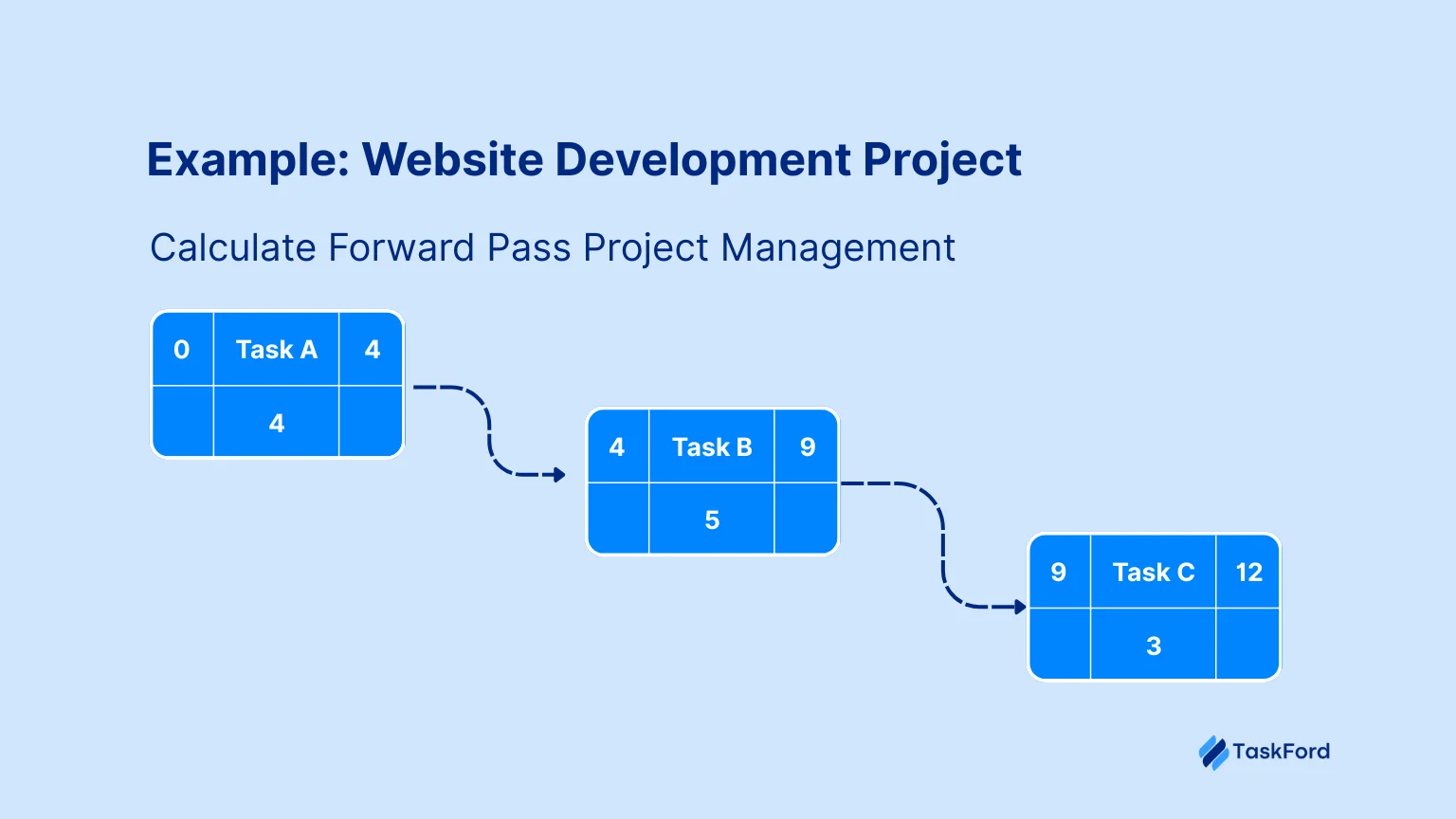
Table Summary:
| Task | Duration | Predecessors | ES | EF |
|---|---|---|---|---|
| Design | 4 days | None | 1 | 4 |
| Development | 5 days | Design | 5 | 9 |
| Testing | 3 days | Development | 10 | 12 |
The project duration is 12 days, as Task C finishes on day 12.
Benefits of Forward Pass Project Management for Timely Delivery
The Forward Pass technique offers several key advantages that can greatly enhance the chances of delivering a project on time:
- Predictable Timelines: Identifies the shortest project duration, enabling realistic deadlines. For example, a software project avoids overpromising a 15-day timeline when 20 days is feasible.
- Risk Mitigation: Highlights critical path tasks that drive the schedule, allowing focused resources to prevent delays. PMI data shows CPM reduces delay risks by up to 20%.
- Improved Efficiency: Optimizes task sequencing to minimize idle time. In construction, it might enable simultaneous tasks, cutting days off the schedule.
- Stakeholder Alignment: Provides clear timelines for better communication, visualized in tools like Gantt Charts, keeping teams and clients aligned.
- Cost Savings: Avoids penalties and overtime by proactively addressing bottlenecks, saving budgets from rushed fixes.
Combining Forward Pass with Other Scheduling Techniques
The Forward Pass Project Management technique is essential for creating a project timeline, but when combined with other scheduling methods, it provides a more robust approach. Here’s how different techniques complement the Forward Pass for better project management:
1. Backward Pass
- How it Works: The Backward Pass calculates the latest start and finish times for each task, helping to identify float (the flexibility in task timing).
- Combined with Forward Pass: While the Forward Pass sets the earliest start and finish times, the Backward Pass helps ensure tasks are completed on time and identifies critical tasks with zero float that cannot be delayed.
2. Critical Path Method (CPM)
- How it Works: CPM identifies the longest sequence of dependent tasks (the critical path) that determines the project's total duration.
- Combined with Forward Pass: The Forward Pass provides the earliest finish times for each task, which are essential for identifying the critical path and helping project managers focus on tasks that directly impact the project’s completion date.
3. Gantt Charts
- How it Works: Gantt Charts are visual tools that display the project timeline, showing task start and finish dates along with dependencies.
- Combined with Forward Pass: The Forward Pass provides the earliest start and finish times, which can be plotted on a Gantt chart to track project progress, manage dependencies, and adjust schedules as needed.
4. PERT Chart
- How it Works: The PERT (Program Evaluation and Review Technique) chart is a tool used to visualize task dependencies and project timelines, focusing on task durations and uncertainties.
- Combined with Forward Pass: The Forward Pass helps calculate the earliest start and finish times, which can then be integrated into a PERT chart to assess the project's overall timeline, identify risks, and optimize task sequences.
5. Agile and Scrum
- How it Works: Agile and Scrum methodologies focus on delivering project increments in short, iterative cycles (sprints).
- Combined with Forward Pass: The Forward Pass sets the baseline schedule for each sprint, while Agile methodologies allow flexibility for changes during execution. This combination helps in planning the early stages of the project while allowing adaptability in subsequent iterations.
Conclusion
Forward Pass Project Management is a crucial technique for precise scheduling, allowing project managers to determine the earliest start and finish times for tasks. By calculating the optimal timeline and identifying task dependencies, Forward Pass helps prevent delays and ensures tasks stay on track.
When paired with other techniques like the Critical Path Method and Backward Pass, Forward Pass Project Management enhances overall project planning by improving efficiency, mitigating risks, and optimizing resource use. Integrating these methods enables project managers to create realistic timelines, align teams, and ensure on-time delivery, leading to successful project completion.
Continue Reading
- Gantt Chart vs Kanban: Which one is better for your Team's Workflow.
- Gantt Chart Dependencies: 4 Common Types and When to Use Them Effectively.
- What is Project Management: A Beginner’s Comprehensive Guide 2025.
- Free Gantt Chart Software Comparison 2025
Making work simpler,
smarter, and more connected
Join our waitlist and be notified first.

Related Blog
Subscribe for Expert Tips
Unlock expert insights and stay ahead with TaskFord. Sign up now to receive valuable tips, strategies, and updates directly in your inbox.



